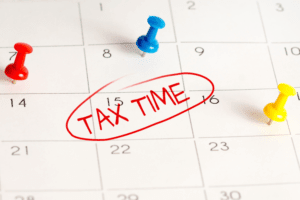Debtor in Possession Financing

Your financial statements, such as your restaurant balance sheet and profit and loss (P&L) statement, aren’t just records of sales of profits, but ways to better understand your business. They help you lay the foundation for a strong operation and allow you to make informed decisions now and for the future of your restaurant. Your balance sheet works hand in hand with your P&L, so it’s important to start there. After you’ve input all your assets and liabilities, the balance sheet template will help you subtract your total assets from your total liabilities.
Restaurant balance sheet vs. restaurant profit and loss statement
But while understanding your P&L statement is essential to tracking your monetary performance, your P&L alone won’t give you the full picture. Download this free balance sheet template to track your restaurant’s assets, liabilities, and equity. Read on to learn what a restaurant balance sheet is, how it differs from a profit and loss statement, and how to create one yourself. If you’re only running your P&L statement once a month or quarter, by the time you receive your data, it is already outdated. Without the opportunity to make immediate, data-driven decisions with anomalies in P&L numbers, you are leaving money on the table. Running your P&L frequently, through automated daily reporting, allows you to take proactive steps in the moment to counter any immediate problems before they become persistent or costly.
Debtor in Possesion Financing
Learn 5 key tips to make your startup business plan stand out and secure an SBA loan, from demonstrating market potential to creating realistic financial projections. Katherine is the bookkeeping for restaurants Content Marketing Manager at TouchBistro, where she writes about trending topics in food and restaurants. The opposite of a picky eater, she’ll try (almost) anything at least once.

How to Manage Your Restaurant Balance Sheet
As a restaurant owner, you have to look after and keep track of every aspect of your operations – staff, raw materials, customer service, sales volume, and more. These challenges are not easy to overcome, but with a good understanding of your balance sheet, you can make the right decisions and take action against them. Profit is the amount of income remaining after a restaurant pays all of its expenses. Sales and accounts receivable pull money in; operating, overhead, and other expenses pull it out. For example, a restaurant might use its P&L statement to understand seasonal sales, comparing June sales to those of the previous year.
Plus, you’ll get tons of great ideas that’ll help you learn how to improve sales in your restaurant. Current assets, also known as liquid assets, are those that can be quickly and easily converted into cash. For example, your current liquor inventory and the funds in your bank account. One of the most important considerations for preparing your P&L is the timeframe for reporting. To stay proactive, the standard frequency for running a P&L is daily, or at the very least, weekly.
- Of course, regularly adding up those numbers can take time, which is why a simple balance sheet template can be your secret weapon.
- The balance sheet is an essential financial statement that provides a snapshot of a restaurant’s assets, liabilities, and equity at a given point in time.
- Your success as a restaurant is dependent on making smart, data-driven decisions in the moment that set you up for long-term success.
- External auditors may also use your restaurant balance sheet to check whether your business is complying with reporting laws or not.
- While some restaurants prepare balance sheets annually, it’s recommended to prepare them monthly or quarterly.
- Keeping track of cash flow statements is crucial for restaurant success as it helps owners better understand exactly where their cash is going and coming from.
Restaurant Balance Sheets

The P&L’s bottom line reveals how much a restaurant cleared in profit, or how much it lost, after costs are subtracted from sales. Because most restaurants operate on very thin profit margins—clearing a 10% margin means they’re doing well—watching sales versus costs is crucial. A P&L statement reveals the bottom line, which equals sales minus the cost of goods sold (food and beverages) and operating expenses. It covers a single fiscal period, whether weekly, monthly, quarterly, or annually. Profit, or net income, appears at the end of a P&L statement, on the bottom line.
- Taxes are incredibly complex, so we may not have been able to answer your question in the article.
- Get started with Taxfyle today, and see how finances can be simplified.
- Based on this statement, you can create financial projections for your business, pitch to investors, and even apply for a loan.
- Using this accounting statement, you can easily identify these issues in advance and avoid long-term financial troubles.
- With your cash statement in hand, you know whether you are losing money, making money, or breaking even.
- Most restaurants will budget labor as a percentage of sales, not a fixed dollar amount.
- You have to balance day-to-day management of front of house operations with back of house matters.


